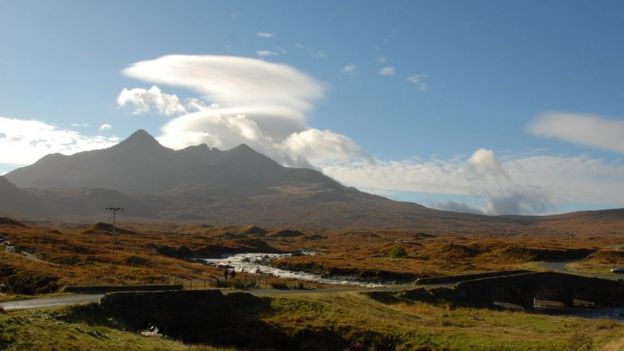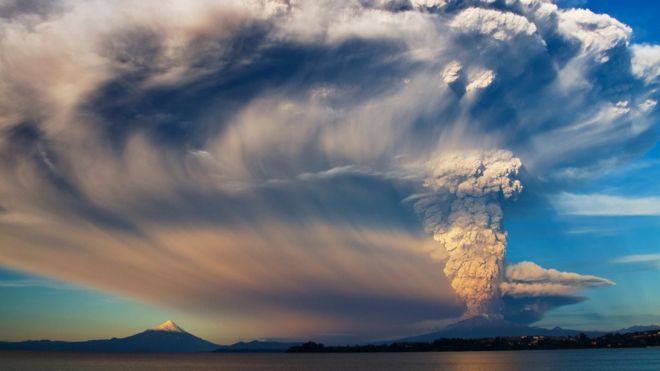A catastrophic volcanic eruption on the Isle of Skye is likely to have caused major changes in the world’s climate.
Researchers from Scotland, Sweden and England have linked the explosion to a prehistoric spike in global warming.
It is the first time a large-scale explosive eruption has been confirmed in Scotland.
The term Palaeocene-Eocene Thermal Maximum (PETM) does not exactly trip off the tongue. It’s none too easy to get out of the keyboard either.
But it played a huge role in shaping the prehistoric world.
Shock waves
It happened about 56 million years ago.
We’re talking geological timescales here so “about” is close enough. No need to time it down to the second or even millennium.
It was a massive climate disturbance that caused global temperatures to shoot up by 8C, four times the increase predicted to create huge problems for present-day humans.

Writing in the journal Scientific Reports the researchers say they have found evidence of an explosion in the same league as the eruption of Krakatau in 1883.
It was one of the biggest volcanic catastrophes in recorded history. The shock waves travelled round the world three and a half times.
The huge amounts of particles thrown into the atmosphere caused global temperatures to fall for several years as the ashes blocked sunlight.
Glassy rock
So why is the Skye explosion being identified as a contributor to the global warming of the PETM? Again, it’s a question of timescale.
Eventually the dust of a volcanic eruption will settle but millions of tonnes of greenhouse gases such as carbon dioxide are also thrown into the atmosphere and will persist.
That is why scientists associate the PETM with volcanic activity in the North Atlantic region, especially in what is now Greenland, the British Isles and the North Sea.

None of these places were called that then as there were no humans to name them, nor were they exactly where they are now.
Skye was not Skye, nor did it yet have the Red Hills. But it is there that the team say the Krakatau-scale catastrophe took place.
The research was a collaboration involving the University of St Andrews, the Scottish Environmental Research Centre at East Kilbride, Sweden’s Uppsala University and Durham University.
Rock samples
They found their evidence in pitchstones. If that sounds like a stone that’s been chucked a fair distance that’s because it is.
Pitchstones are created when volcanic lava or magma cools quickly. It creates a glassy rock. Much later, it was prized by Stone Age humans.
The researchers found pitchstone outcrops from a single, huge eruption 18 miles (30km) apart on Sgùrr of Eigg and the Skerry of Òigh-sgeir (Hyskeir) in the Inner Hebrides.
They say both sets of stones had an identical composition and came from the same place – Skye.
Among the methods they used to identify and date the pitchstones was isotope geochemistry which measures the relative levels of isotopes in rock samples.
The research confounds the previously accepted view that the Scottish sector of the North Atlantic did not see any large explosive eruptions at the time of the PETM.
Instead, the authors say these large eruptions are likely to have been a major contributing factor to that enormous climate disturbance.
Source: BBC News

































Leave a Comment
You must be logged in to post a comment.